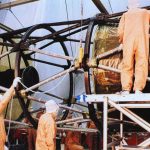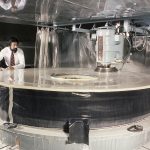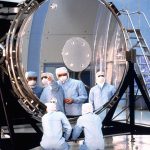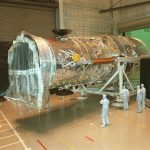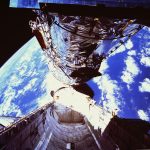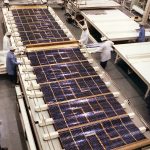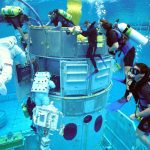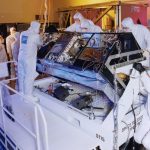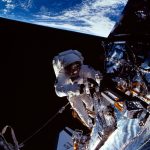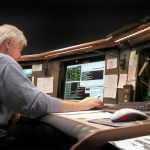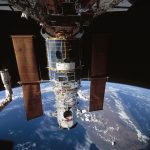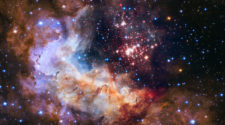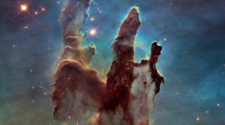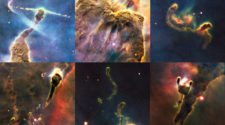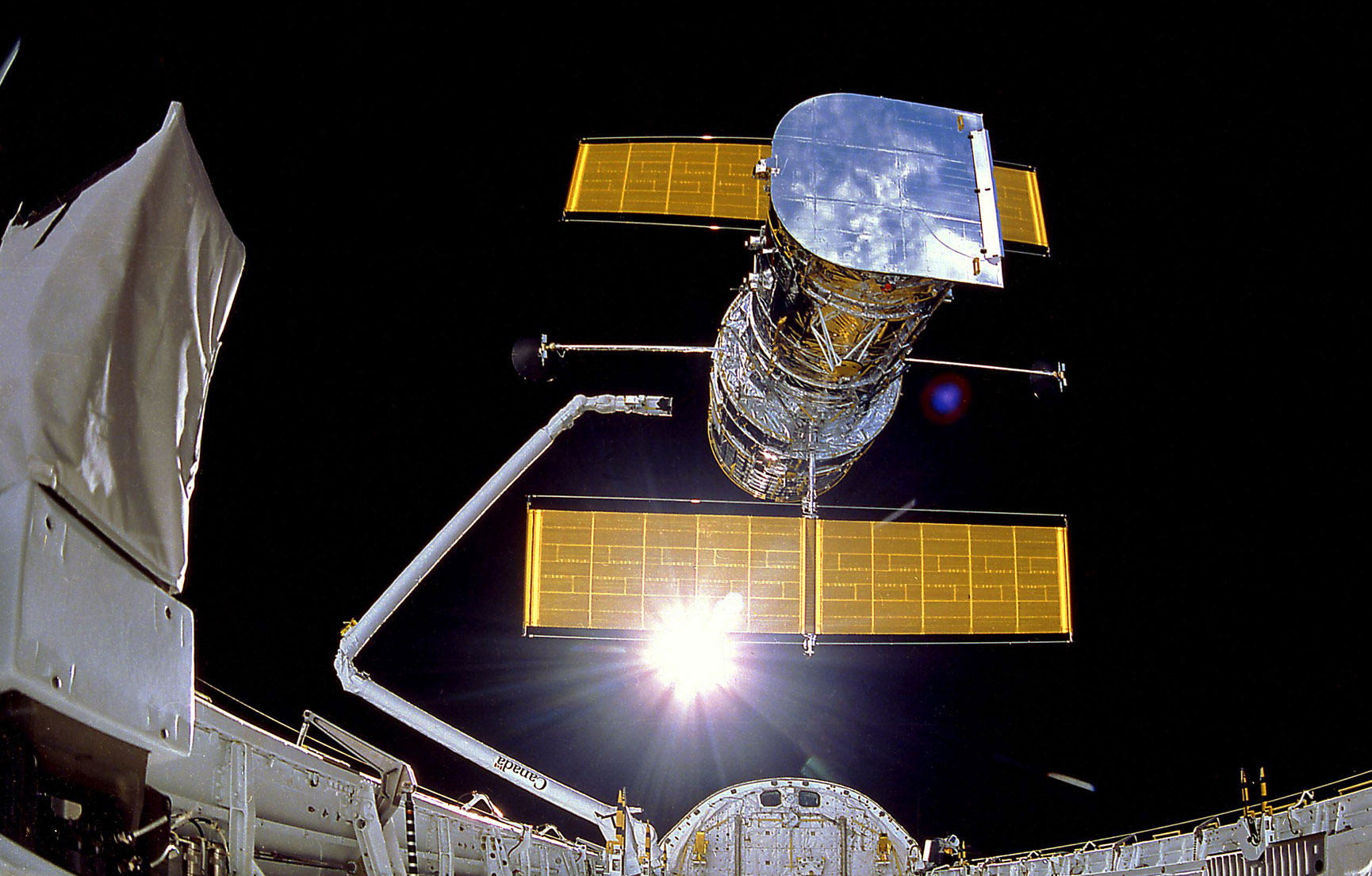
Since launching in 1990, the Hubble Space Telescope (HST) has awed and inspired the public with a dazzling array of images. More than just pretty pictures, Hubble has collected 25 years of data, providing unprecedented views and insights into the universe. By observing objects from neighboring planets to the most distant galaxies, Hubble has captured breath-taking photos of supernovae, stellar nurseries, planetary nebulae and more. Follow along as we explore the history of the telescope, its discoveries, and highlight the orbiting observatory’s top 100 images.
Throughout history humans have been turning their heads towards the skies, in an attempt to learn more about the universe. In 1610, Galileo revolutionized the way people viewed the cosmos by turning a spyglass to the heavens. With his rudimentary telescope, he had trouble making out the rings of Saturn that are visible with the most basic telescopes we have today. Throughout the years, advances in optics improved scientists’ views of the planets, stars, and distant galaxies, but Earth’s atmosphere still blocked much of the light for ground-based observers.
It wasn’t until 1923 that the idea of space telescopes was first proposed. German scientist Hermann Oberth suggested that a telescope could be launched into orbit in order to overcome atmospheric distortions. As rocket launchings became more frequent, the idea became feasible, and in 1969, official approval was given for the launch of a large space telescope. However, its development took longer than preparing for a trip to the moon.
A few years later, in 1975, the European Space Agency (ESA) collaborated with NASA on a plan that would eventually become Hubble. Funding was approved by Congress approved in 1977, and with the development of the Space Shuttle, NASA now had a means to deliver the telescope to orbit.
Originally dubbed the Large Space Telescope, it was later renamed the Hubble Space Telescope (HST) in honor of Edwin Hubble, the American astronomer who determined that the universe was expanding. On April 24, 1990, world’s first space telescope was then launched aboard the Space Shuttle Discovery. The mission originally cost $1.5 billion, but there would be ongoing costs — both expected and unexpected.
Right off the bat, researchers noticed a huge issue — the telescope’s images were fuzzy and practically useless. Hubble’s main mirror had a major defect: a spherical aberration, only 1/50th as thick as a piece of paper, caused by a manufacturing error. Researchers worked quickly to develop a fix.
However, it would be three years before NASA could undertake a repair mission. On Dec. 2, 1993, the Space Shuttle Endeavor ferried a crew of seven astronauts to fix Hubble across five days of spacewalks. During the missions two new cameras, including the Wide-Field Planetary Camera 2 (WFPC-2) were installed. When the first new images from Hubble reached Earth, they were breathtaking.
Hubble has been serviced a total of five times. Among the repairs, astronauts had to replace batteries and directional gyroscopes. The final servicing mission took place in 2009, and the telescope is expected to continue to function for years to come. NASA is currently developing Hubble’s replacement, the James Webb Space Telescope (JWST), which is scheduled to launch in 2018.
The Hubble Space Telescope’s elevated perspective and advanced optics allow it to peer farther away than ground-based optics can dream of. Because light takes time to travel long distances, the range of the HST makes it function like a time machine. Looking through the orbiting telescope is like peering back in time; the light collected from remote objects shows the object as it appeared when the light left, not how it would appear today. Take our closest neighbor, the Andromeda galaxy — at a distance of 2.5 million light-years from Earth we see it as it was 2.5 million years ago.
Thanks to Hubble’s optics, we can see distant objects that otherwise wouldn’t be visible.
Astronomers pointed the HST to a seemingly-empty patch of sky, and were surprised with what they saw. The “empty” patch of sky contained over 3,000 galaxies too distant to be viewed by other telescopes. Subsequent deep field observations have yielded even more information, and never-before seen views.
In addition to gazing at the early universe, Hubble has helped astronomers determine the age of the universe. By measuring a special kind of pulsing star known as a Cepheid variable, astronomers were able to narrow down the age of the universe from the pre-HST range of 10 to 20 billion years, to the more precise 13.7 billion year age.

The Hubble Space Telescope is also capable of examining individual stars across various stages of their evolution – from the clouds of dust that form the embryonic stellar cocoons to the corpses of stars that went supernova, and every stage in between.
Stars in other galaxies are fairly easy to see, but the planets orbiting them present a challenge. The idea of extra-solar planets, or exoplanets, used to be a thing of science fiction; however, in 2008, Hubble captured pictures of the planet Fomalhaut b –the first exoplanet directly imaged in visible light. Most planets are challenging to photograph, and most of Hubble’s exoplanet discoveries were not directly imaged. The transiting method of exoplanet detection is made by the detection of a dip in the host star’s brightness as the planet passes in front.
Hubble may spend much of its time peering light-years from Earth, but occasionally will be used to photograph the planets in our own solar system. High resolution images taken of Jupiter, Saturn, and even Pluto can provide insights that can only be topped by planetary probes in orbit around them. Images from Hubble allow scientists on Earth to monitor changes in the planet’s atmosphere and surface. When the comet Shoemaker-Levy crashed into the Jupiter in 1994, Hubble photographed the fatal collision. Recently, Hubble detected a possible sub-surface ocean in the Jovian moon Ganymede.
Despite its turbulent beginning, the Hubble Space Telescope has been operating for a quarter of a century, providing scientists with a greater understanding of the universe as a whole. Hard to fathom that children today have lived in a world that’s always contained the Hubble Space Telescope.

